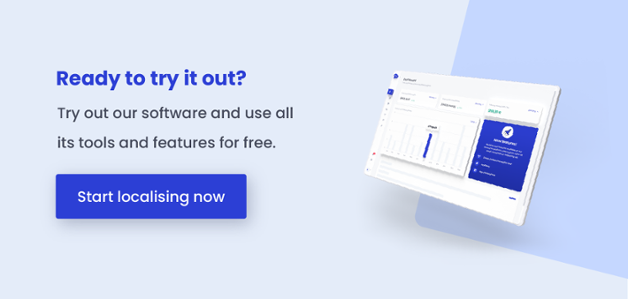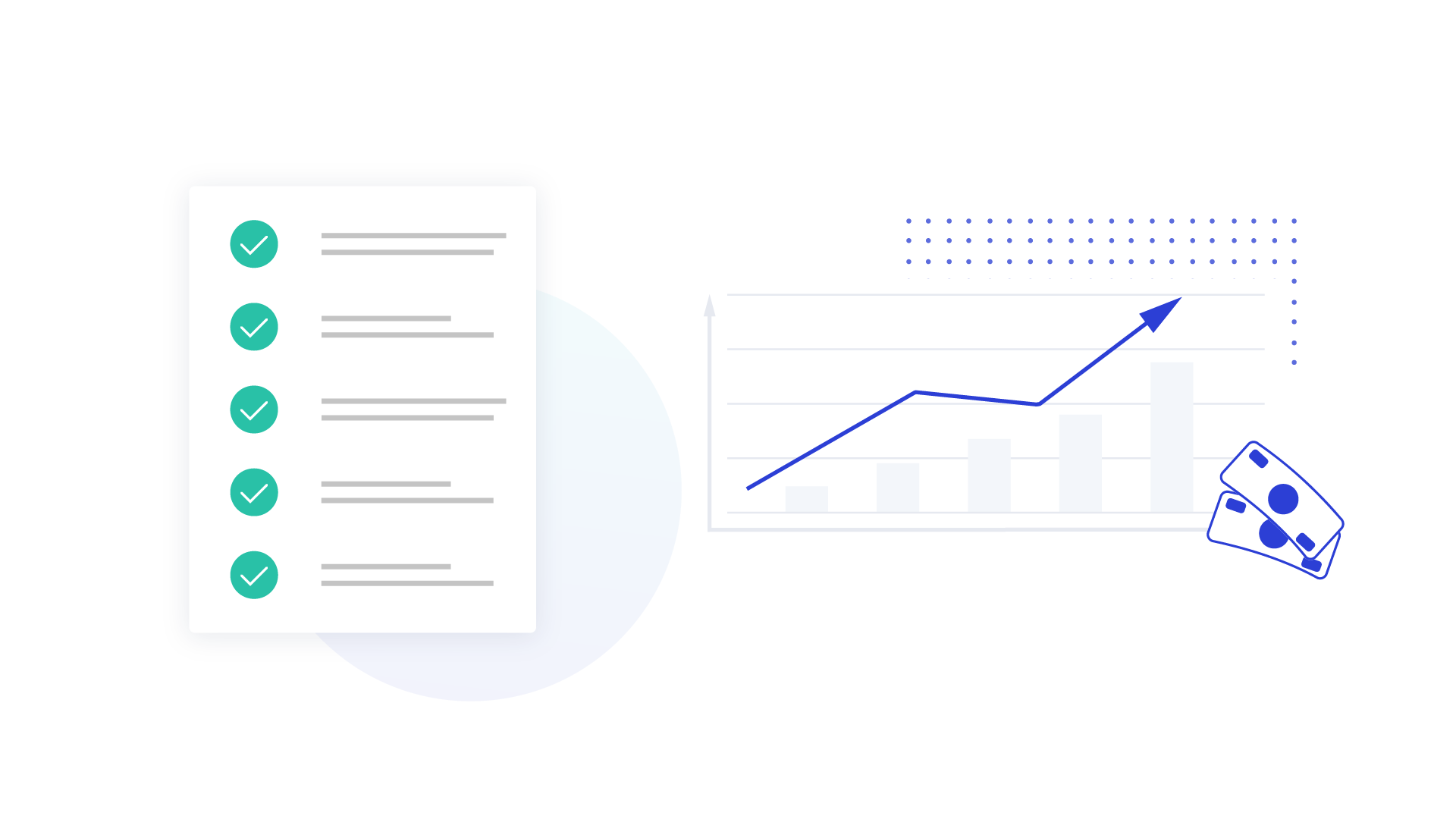Top 5 Aspects to Consider When Planning Your Localisation Budget
Apr 28, 2022 11:23:27 AM | 4 min | Localisation
Top 5 Aspects to Consider When Planning Your Localisation Budget
You want your localisation strategy to be as efficient as possible at all levels, but are you willing to pay the price? We’re asking in the literal sense.
One of the most common challenges companies face when it comes to their localisation journey is planning their budget.
This blog article features some of the most important aspects you need to be aware of when mapping out your localisation costs.
Pay Attention to ROI
Let’s imagine the following scenario: you have multiple markets you want to expand to but it seems your current resources don’t allow you to target them all. How do you then select which one(s) to prioritise?
A go-to-market analysis, where you look at the costs and benefits of each of those markets, is a powerful tool. You need to consider how soon you are going to break even and/or make a profit, as well as how much it will cost to maintain your presence in the specific market.
It is highly important to consider the return on investment (ROI) your efforts will be able to generate in each market.
One trick that could help you decide is looking if you already have customers in a specific market. It would then be a strategic move to establish yourself in that region, as you can direct your focus towards growing that audience instead of starting from scratch.
“Watch Out” for Scalability
You need to decide what your ambitions are - do you just want to target one specific market or are you following a growth journey?
If it’s the second option, you need to consider the scalability of your setup. You need a solution that will make you as efficient as possible, one that ensures you don’t face a large overhead and that internal bottlenecks are alleviated.
Consider for instance the impact of manual processes: in small companies or in low-cost areas, they may be the best solution available. For a business undergoing expansion, this may, however, not be optimal. You need to think about streamlining your localisation processes if you are a company expanding itself.

The benefits include automation tools that make your workflows more efficient by removing repetitive tasks and reducing the amount of iteration that needs to be done.
When you use Translation Memory, for example, your previously translated segments will be stored and reused for similar content. This will allow you to reduce human effort and increase your time to market.
Machine Translation is another tool with long-term benefits. The more you use it, the more accurate it becomes, resulting in higher quality translation and a reduced need for post-editing.
Although these automated tools can represent a cost in the beginning, they will prove to be profitable over time by making you more productive and speeding up your time to market.
Prioritise your Content
The way you allocate money depends on whether you are going to localise your whole product portfolio or just certain items.
It’s common for companies to have multiple digital products that need to be translated and localised – from websites to apps. But it is not a must to introduce your new audiences to everything at once. On the contrary, prioritising content to bring to the new markets poses certain advantages.
For example, it facilitates your business going faster to the market, as you won’t have to wait for a multitude of content to be ready before you can go live.
To achieve this, when selecting what to localise, you need to consider that different types of content have different levels of visibility. The general rule is that the more visible the content, the more attention it requires, and hence, it incurs higher localisation costs.
Especially if you are on a tight budget, you need to be selective and base your decision on which products are most valuable to your audience and which ones have the biggest ROI potential.
We find four types of content that should be a top priority when tapping into a new market:
- Marketing content: it builds awareness and moves consumers down the sales funnel, converting prospects into loyal customers;
- Customer support: knowledge bases, user manuals, and technical information pieces are what many customers rely on when troubleshooting issues or when onboarding new users;
- New features: if you have an update that is relevant to your new audience, it makes perfect sense to prioritise its localisation and that of documents associated with it;
- Legal documents: when choosing to go global, you must comply with all local regulations in order to avoid legal issues.
Adapt to Your Audience
We’re sure you already know that different target audiences have different needs and therefore, require different approaches.
Even within the same country, people in different regions may have different linguist expectations. For instance in Spain, you would use Spanish when taping into the Madrid region but you would most likely need Catalan when communicating with your audiences in the region of Barcelona.
You also need to consider that even when you have one language, there are nuances depending on the market you are tapping into. The words used in British English may not be the same in American English so you need to be prepared for that. You can not just “copy-paste” your content from one country to another.

You should also acknowledge that having a website only in English is not optimal, because approx. 75% of users prefer a website in their native language, so you need to invest in that.
Not to mention that you would be preventing non-English speakers from enjoying your content.
All these aspects will of course have an impact on your localisation costs and you need to be prepared for that in order to create a successful strategy.
Each language has its own price, depending on factors such as the translators' supply and availability. Languages in high demand will usually be less costly than low-frequency languages.
Face the Truth - Localisation Is an Ongoing Process
That’s the beauty of localisation - it is a continuous journey. Your job is not done once your content goes live in new markets because your content and brand image need constant maintenance to still be relevant to the global markets you are part of.
You have to make sure all your markets are permanently up to date, which will be reflected in your localisation budget. The good news is that there are smart hacks that enable continuous localisation without paying a fortune.
Continuously localising your content is necessary when you deal with dynamic content. New and updated content you add in the original language of your business needs to be translated and localised for all the regions you operate it. It is an iterative process where you will sometimes need to revise pieces that have already been translated and localised.
You also need to be prepared for the fact that no matter how good your content is and how much effort you invest in it, it may not be received by the audiences in the way you hoped for.
That is why your localisation strategy should include revising if it is still profitable for you to be in certain markets.
Now that we’ve laid down the most important tips, we hope you feel prepared to start your localisation journey. Let all these insights guide you towards going global.

 Dansk
Dansk
 Deutsch
Deutsch
 Dutch
Dutch
 Español
Español
 Français
Français
 Norsk
Norsk
 Svenska
Svenska




